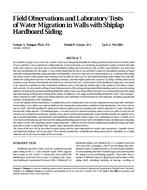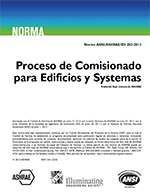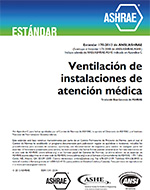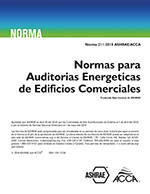Description
In a number of legal cases across the country it has been alleged that hardboard siding performs poorly from a moisture point of view and thus is not a satisfactory siding material. In one particular case involving an apartment complex of about 400 units in the San Francisco Bay area, decay of both hardboard siding and wood trim as well as other wood members was noted and has been documented for this paper. It was clearly found that the decay was primarily caused by substantial amounts of liquid rainwater leaking behind the siding and other wood members. However, other decay or deterioration (e.g., swelling) of the siding was noted in areas where liquid water intrusion was not directly observed. We speculated that liquid water might move laterally behind the siding from leak sites in the building envelope, and that might explain the existence of siding swelling observed at locations some distance horizontally from otherwise obvious leak sites. Deterioration of the hardboard siding also was found to be caused by a number of other installation problems such as allowing the bottom edge of the siding to be in direct contact with concrete. We also noted swelling of some bottom courses of the siding and speculated that standing water on concrete paving might be wicking up the gypsum sheathing behind the siding. It also was alleged that rainwater was wicking up between the siding laps and causing swelling and cracking of the siding. In addition, it was suggested that hardboard absorbs water “like a sponge” when compared to other widely used siding materials and contributes to deterioration of wall materials, including gypsum and oriented strand board (OSB) sheathings. To test the validity of these hypotheses, we undertook a series of laboratory tests of water migration in mock-up walls with hardboard siding. Every effort was made to duplicate the construction and weather conditions at the apartments. One series of tests run on walls with both hardboard siding and redwood siding involved examining the lateral migration of water introduced between the siding and the 15 lb building paper. A second set of tests involved spraying water on two test walls to check for the existence of wicking between the laps. Another series of tests involved determining the vertical height and effect of capillary wicking in gypsum sheathing, gypsum board, and hardboard siding whose bottom edges were submerged in water. A fourth set of tests involved introducing water between the siding and building paper in four walls with different types of siding and comparing the impact on the OSB sheathing and the siding materials. A fifth set of tests involved submersing hardboard siding and other materials in water to determine their relative water absorption characteristics. The setup of the tests will be described in detail along with the water migration test results and conclusions. A number of new and important findings will be presented. The moisture performance of hardboard siding along with its suitability as a siding material will be discussed in light of the test results.
AUTHOR: George A. Tsongas, Ph.D., P.E., Dennis P. Govan, AIA, Jack A. McGillis
CITATION: Thermal Performance of the Exterior Envelopes of Buildings VII
KEYWORDS: December, Florida, 1998
YEAR: 1998
Citation: Thermal Performance of the Exterior Envelopes of Buildings VII
Product Details
- Published:
- 1998
- File Size:
- 1 file , 1.7 MB
- Product Code(s):
- D-8075




